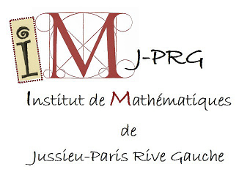| Résume | Unimodularity was defined by Hrushovski, in his proof that a unimodular strongly minimal set is one-based, thus generalising Zilber's result that a locally finite strongly minimal set is 1-based. It was claimed in the same paper that unimodularity was equivalent to a weaker notion known later as functional unimodularity. In an attempt to clarify the situation, Pillay and Kestner distinguished two types of functional unimodularity -one for definable sets and one for type-definable sets- and studied their relationship in the context of strongly minimal structures.
In this talk, I will present joint with Wagner where we introduce yet another variant called correspondence unimodularity (for types and for definable sets) and present several results describing the relationship between the different concepts.
For instance, we show the variants of unimodularity for types coincide in omega-stable theories, and all variants coincide for non-multidimensional theories where the dimension is associated to strongly minimal types (e.g. strongly minimal theories or groups of finite Morley rank).
|

